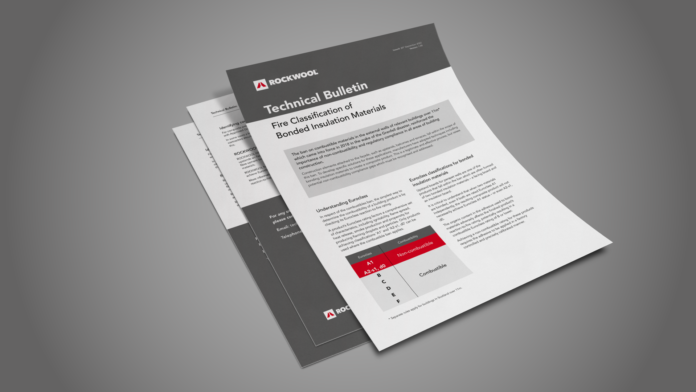ROCKWOOL has released a technical bulletin to provide guidance to specifiers, architects and contractors on the use of bonded construction materials, such as insulated upstand boards, and the finished product’s subsequent Euroclass reaction-to-fire rating.
With the ban on combustible materials in the external walls of buildings over 18m in response to Grenfell, some manufacturers have adopted techniques to develop specific solutions for applications that fall within its scope, such as the bonding of insulation materials to create a composite board – which raises the potential for an inaccurate reaction-to-fire rating to be claimed on the finished product.
In response, ROCKWOOL has written a technical bulletin to give advice on the use of these composite products, and the potential impact of these on a building’s compliance with both Approved Document B (ADB) and the combustible ban (the need to achieve Euroclass A2-s1, d0 or better).
Commenting on the issue, Lisa Stephens, product manager of building envelope at ROCKWOOL UK, said: “Put simply, we’re seeing assumptions within the industry that bonding two Euroclass A1 rated materials together results in a composite A1 product, which certainly isn’t always the case.
“It’s important that we support the industry to understand the importance of designing, specifying and working with products that meet stringent safety ratings. We hope that adding this technical bulletin to our suite of support resources will give valuable advice to a wide range of audiences.”




